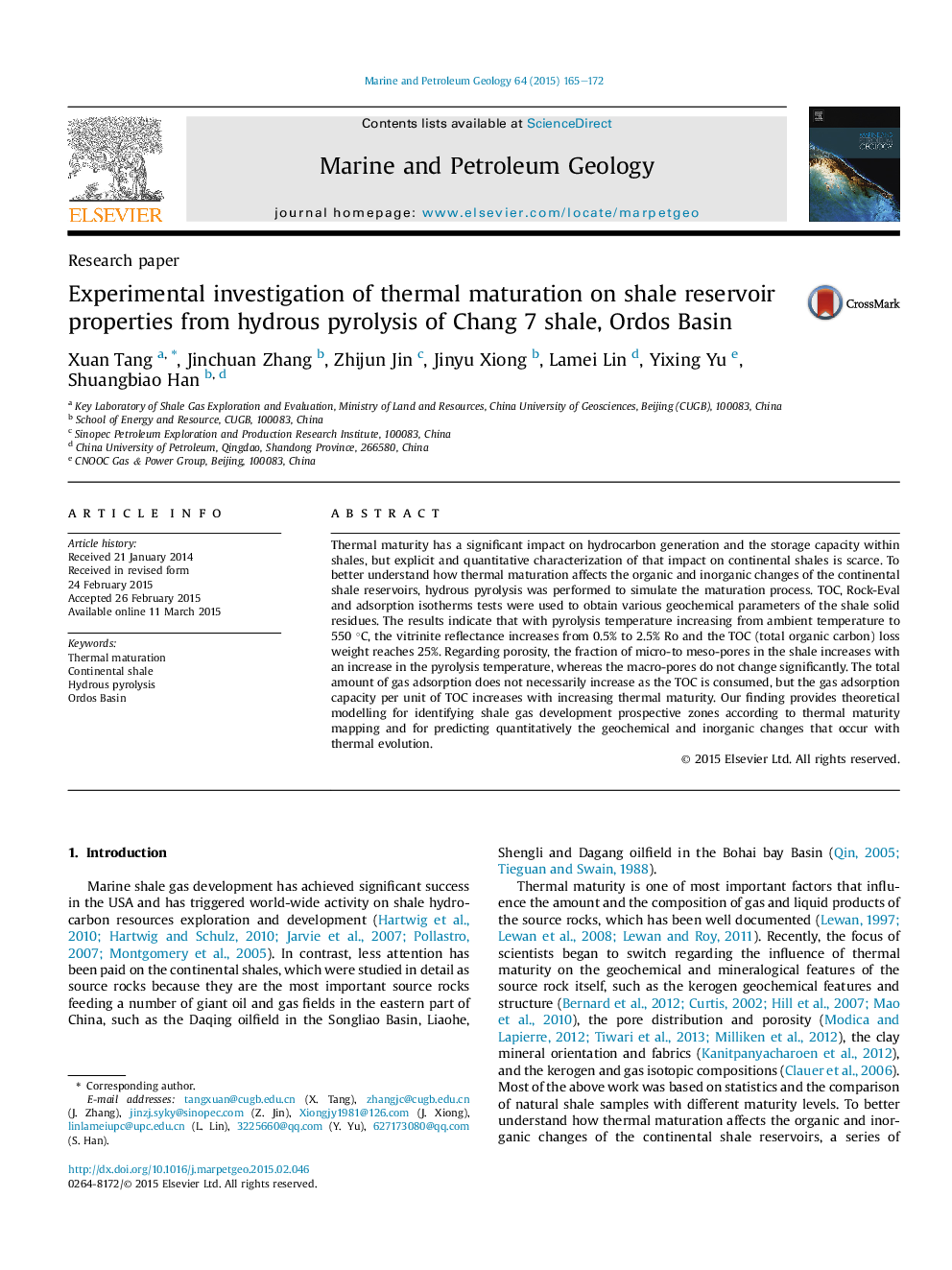| Article ID | Journal | Published Year | Pages | File Type |
|---|---|---|---|---|
| 6435146 | Marine and Petroleum Geology | 2015 | 8 Pages |
â¢We quantify the influence of thermal maturity upon shale organic and inorganic features.â¢Thermal maturation have more significant influence on micro-to meso-pores than macro-pores.â¢Thermal maturation may not increase total amount of gas adsorption, but increase gas adsorption capacity per unit of TOC.
Thermal maturity has a significant impact on hydrocarbon generation and the storage capacity within shales, but explicit and quantitative characterization of that impact on continental shales is scarce. To better understand how thermal maturation affects the organic and inorganic changes of the continental shale reservoirs, hydrous pyrolysis was performed to simulate the maturation process. TOC, Rock-Eval and adsorption isotherms tests were used to obtain various geochemical parameters of the shale solid residues. The results indicate that with pyrolysis temperature increasing from ambient temperature to 550 °C, the vitrinite reflectance increases from 0.5% to 2.5% Ro and the TOC (total organic carbon) loss weight reaches 25%. Regarding porosity, the fraction of micro-to meso-pores in the shale increases with an increase in the pyrolysis temperature, whereas the macro-pores do not change significantly. The total amount of gas adsorption does not necessarily increase as the TOC is consumed, but the gas adsorption capacity per unit of TOC increases with increasing thermal maturity. Our finding provides theoretical modelling for identifying shale gas development prospective zones according to thermal maturity mapping and for predicting quantitatively the geochemical and inorganic changes that occur with thermal evolution.
